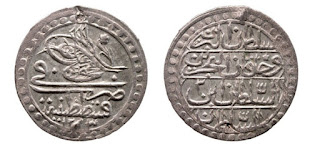The Ottoman Empire was an empire that controlled much of Southeastern Europe, Western Asia and Northern Africa between the 14th and early 20th centuries. It was founded at the end of the 13th century in northwestern Anatolia in the town of Sogut (modern day Bilecik Province) by the Turkoman tribal leader Osman I.
After 1354, the Ottomans crossed into Europe and with the conquest of the Balkans, the Ottoman beylik was transformed into a transcontinental empire. The Ottomans ended the Byzantine Empire with the conquest of Constantinople in 1453 by Mehmed the Conqueror.
Map of independent Turkic beyliks in Anatolia during the 14th century
The last siege of Constantinople (1453), by Jean Le Tavernier after 1455 AD
Under the reign of Suleiman I, (reigned from 1520 to 1566, about 45 years), the Ottoman Empire marked the peak of its power and prosperity as well as the highest development of its government, social and economic systems. At the beginning of the 17th century, the empire contained 32 provinces and numerous vassal states. Some of these were later absorbed into the Ottoman Empire, while others were granted various types of autonomy over the course of centuries.
Portrait of Suleiman by Titian, 1530 AD
With Constantinople (modern-day Istanbul) as its capital and control of lands around the Mediterranean Basin, the Ottoman Empire was at the center of interactions between the Eastern and Western worlds for six centuries
The empire continued to maintain a flexible and strong economy, society and military throughout the 17th and much of the 18th century. However, during a long period of peace from 1740 to 1768, the Ottoman military system fell behind that of their European rivals, the Habsburg and Russian empires. The Ottomans consequently suffered military defeats in the 18th and early 19th centuries.
Ottoman troops attempting to halt the Russians during Siege of Ochakov in 1788
The successful Greek War of Independence (1831) concluded with decolonization following the London Protocol (1830) and the Treaty of Constantinople (1832). This and other defeats prompted the Ottoman state to initiate a comprehensive process of reform and modernization known as the Tanzimat. (1839-1876). Thus over the course of the 19th century, the Ottoman state became vastly more powerful and organized, despite losses in the Balkans
Siege of Acropolis in 1826-1827 during the Greek War of Independence
In 1908, the Empire turned into a constitutional monarchy, which conducted multi-party elections. In 1913, however the now radicalized CUP (Committee of Union and Progress) took over the government in a coup. Whilst the empire was largely able to hold its own during World War I, as part of the Central Powers (Germany, Austria- Hungary and Bulgaria), its ultimate defeat led to occupation by the Allied Powers and the territory being divided between the United Kingdom and France.
Russian trenches in the forest of Sarikamish
The successful Turkish War of Independence (1919-1923) led to the emergence of the Republic of Turkey and the abolition of the Ottoman monarchy
Mehmed VI, the last Sultan of the Ottoman Empire leaving the country in November 1922
Ottoman Empire Coins
The original coinage consisted of small copper and silver coins (akche, called asper by Europeans). A notable Ottoman innovation was the tughra, an elaborate monogram formed of the sultan's name and titles, which occupies one side of the coin.
Manghir, Mehmed II, 1444-1446 AD, copper, weight 1.5 gm
Akce-Bayezid I, 1390 AD/792 AH, silver, weight 1.1 gm
Akce- Bayezid II, AH 886/ 1481 AD, silver, weight 0.7 gm
Besparalik- Mahmud II, 1223 AH, 5 Para silver, weight 1.7gm
























No comments:
Post a Comment
Any inputs or feedback is welcome!